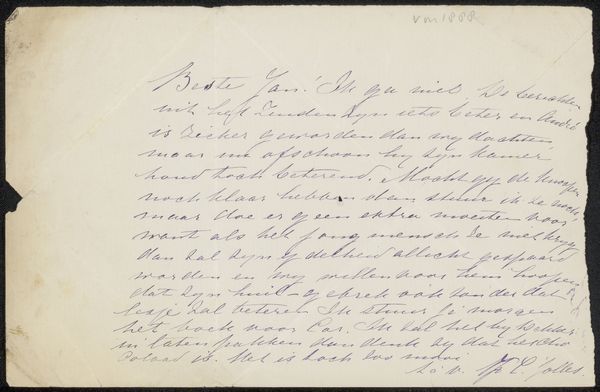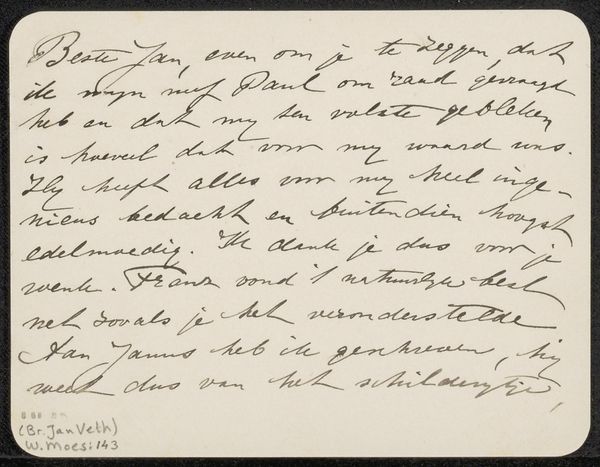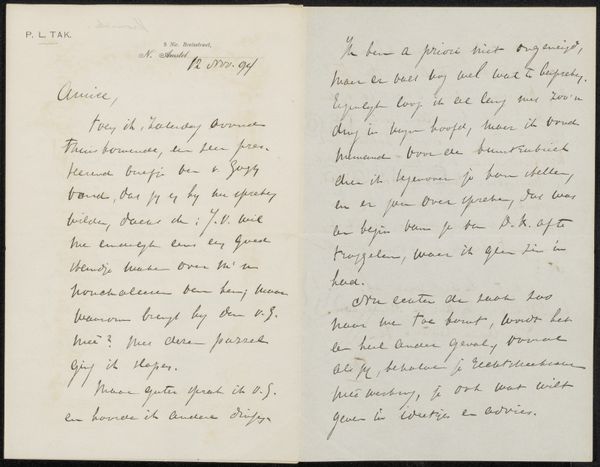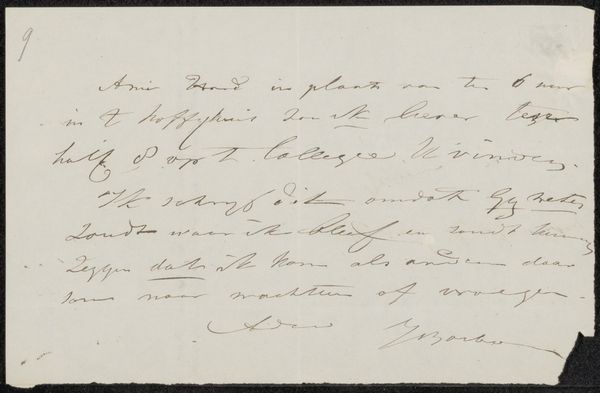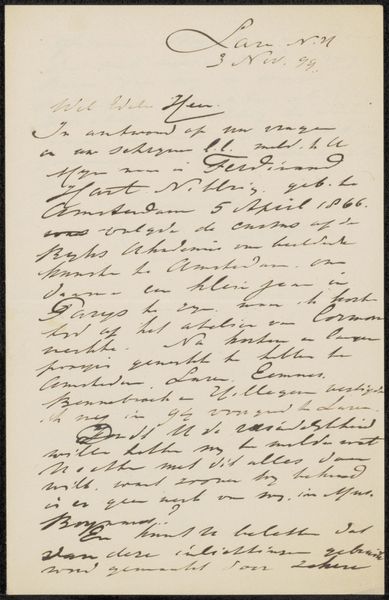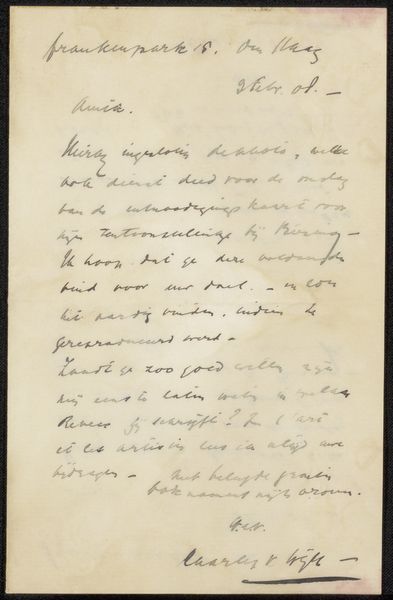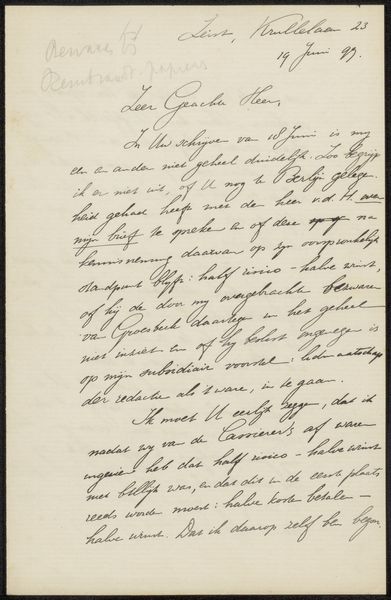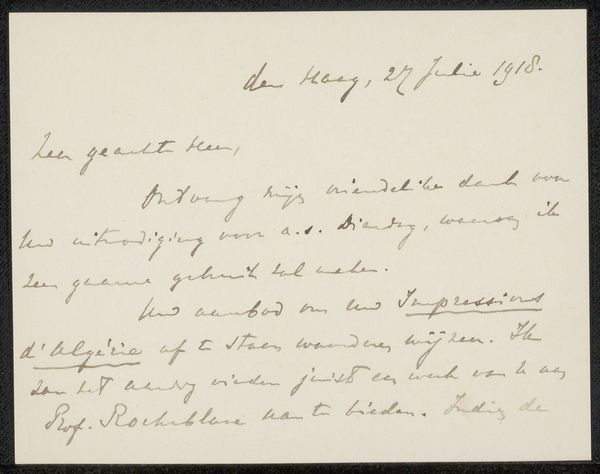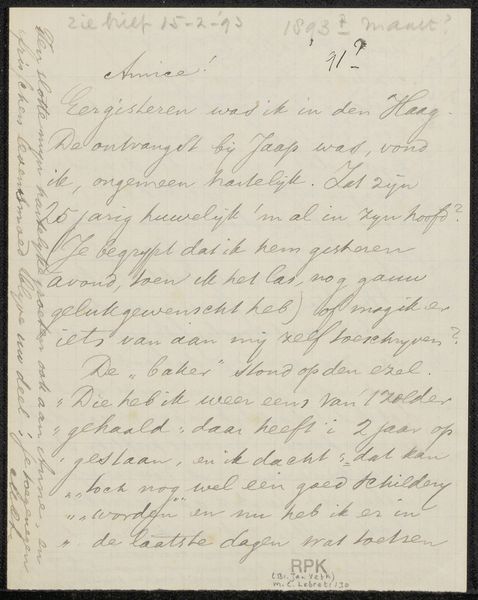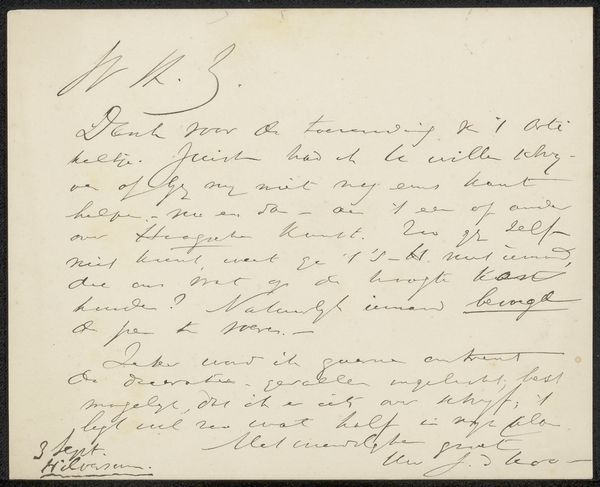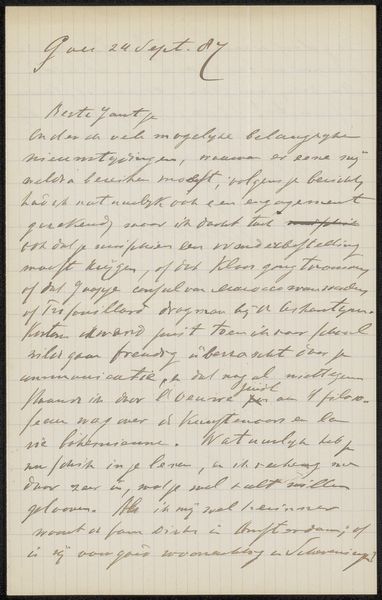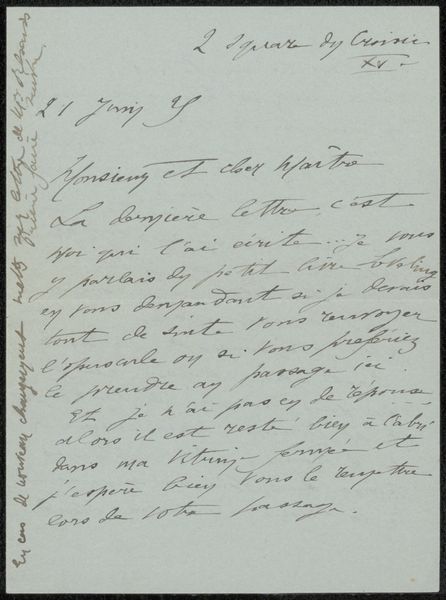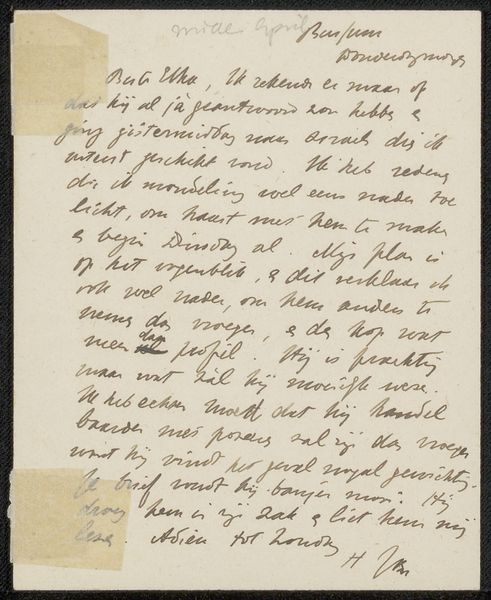
drawing, paper, ink, pen
#
drawing
#
script typography
#
hand-lettering
#
hand drawn type
#
hand lettering
#
paper
#
personal sketchbook
#
ink
#
hand-drawn typeface
#
pen-ink sketch
#
pen work
#
sketchbook drawing
#
pen
#
sketchbook art
#
calligraphy
Copyright: Rijks Museum: Open Domain
Curator: This work, entitled "Brief aan Jan Veth," which translates to "Letter to Jan Veth," is believed to be from 1906. It’s by Alphons Diepenbrock, created with pen and ink on paper. What are your initial thoughts? Editor: My first thought? Intimate. It’s as if we’ve stumbled upon a deeply personal exchange, a peek into Diepenbrock's private world. The looping script dances across the page—inviting, yet slightly guarded. Curator: Exactly. Diepenbrock wasn’t just composing a note; he was crafting a visual object. Notice the deliberate variations in line weight and the almost calligraphic flourishes. This piece goes beyond mere correspondence. Editor: Agreed. The very act of hand-lettering—so removed from the mechanical printing press—imbues it with a handcrafted quality. It brings the labor to the forefront, making you think about the physical act of its creation, each stroke, each carefully chosen word. Who was Jan Veth and what relationship existed? The content of the letter surely adds layers too. Curator: Jan Veth was an important artist, critic, and intellectual figure in the Netherlands. You can tell by Diepenbrock’s attention to composition, and overall artistic sensibility in a correspondence is testament to their intellectual camaraderie and Diepenbrock’s awareness that what he inscribed, even if fleeting, has some merit. This personal “letter” is in itself elevated and meant to reach us—isn’t that a funny concept? Editor: Absolutely, a playful exchange, meant to spark conversation as all letters once did, before they turned into email. It's remarkable how such a simple medium – pen on paper – can become so compelling when infused with deliberate intention. I see these gestures and can help but consider the economic exchange of the materials itself, its worth today in comparison. The production of writing itself is being valued, in effect. Curator: Yes! Diepenbrock understood how materials inform content. Through a personal, careful script that demands closer viewing, his choice to write as he did says much about who he was relating to. Editor: Indeed. Seeing it as both documentation of social contact and reflection of artistic principles makes one reconsider the letter altogether. Curator: Looking closely and carefully has opened this piece of history to wider perspective, what joy to learn about Jan Veth. Editor: I can also now go and look at materials in different ways—from personal object to economic material.
Comments
No comments
Be the first to comment and join the conversation on the ultimate creative platform.
